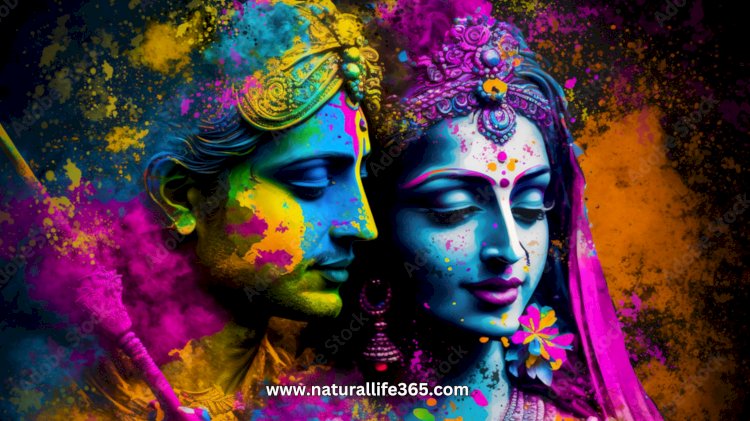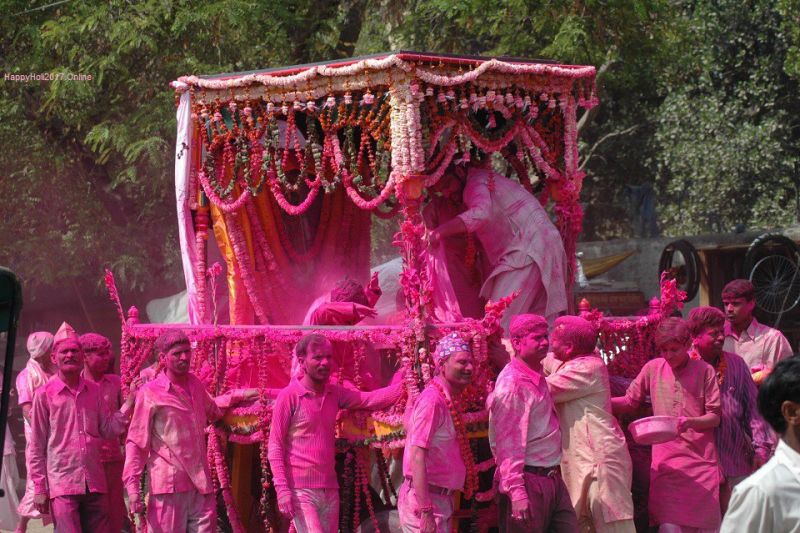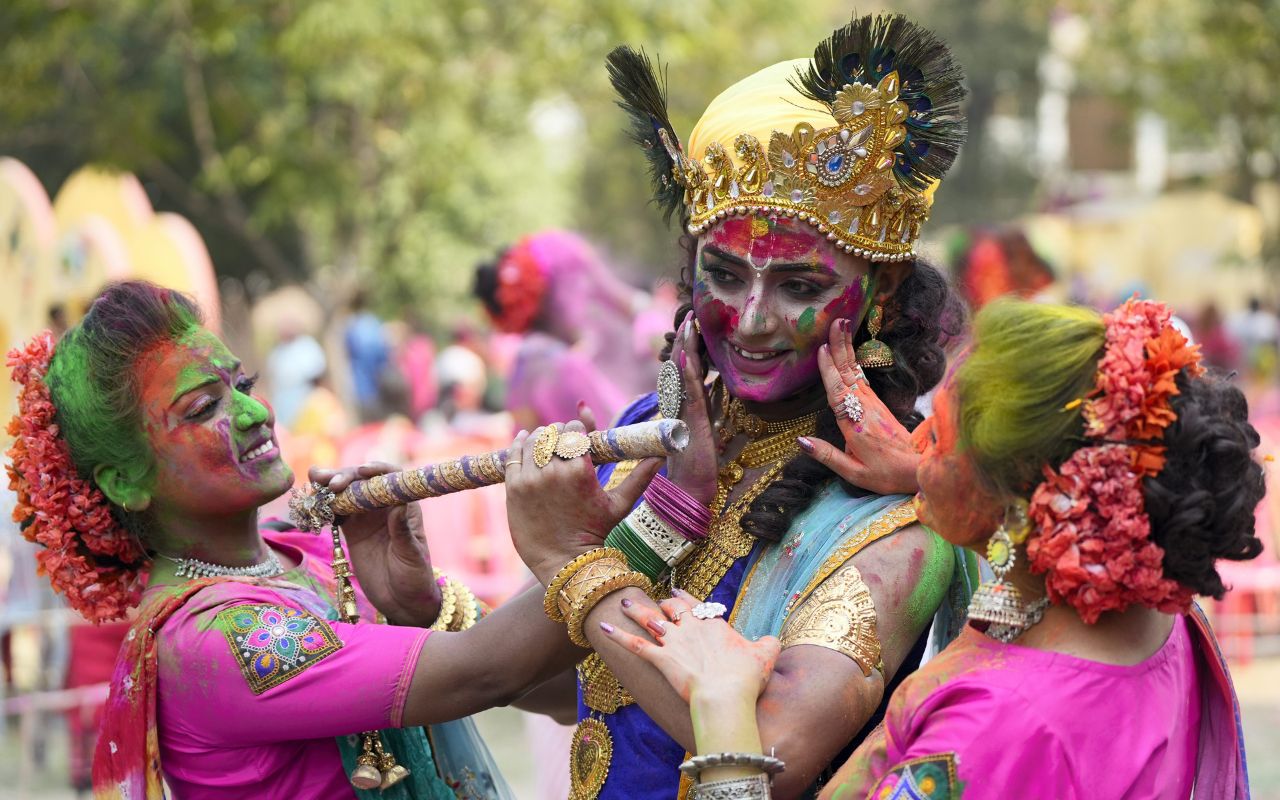Dolyatra Festival 2025: Understanding the Bengali Celebration of Colors
Explore the unique customs of Dolyatra in Bengal and its connection to Holi, highlighting devotion, joy, and the triumph of good over evil.

In Bengal, spring arrives with a burst of color, music, and spiritual fervor through Dolyatra, the region’s unique take on the festival of colors. While much of India celebrates Holi, Bengalis mark the occasion with a blend of Vaishnavite devotion, artistic expression, and joyous revelry. But what makes Dolyatra stand out? How does it compare to Holi, and what cultural traditions define it?
If you’ve ever been curious about this festival or are looking to experience it firsthand on March 14, 2025, this guide will walk you through its meaning, customs, and significance.
The Essence of Dolyatra: What Makes It Special?
Dolyatra, also known as Dol Purnima, is more than just throwing colors. It’s deeply tied to Vaishnavism, the worship of Lord Krishna. The festival falls on the full moon (Purnima) of the Bengali month of Phalguna (usually March) and marks the birthday of Chaitanya Mahaprabhu, a 15th-century saint and the founder of Gaudiya Vaishnavism.
The Meaning of Dolyatra in Vaishnavism
For Vaishnavites, Dolyatra is not just a celebration of spring but a spiritual event symbolizing Krishna’s divine love and playfulness. According to tradition, idols of Krishna and Radha are placed on a beautifully decorated swing (dol) and carried through the streets in grand processions. Devotees sing hymns, offer prayers, and smear abir (colored powder) on each other, creating an atmosphere of devotion and joy.
While Holi in North India is more about unrestrained fun, Dolyatra blends devotion and artistic expression with festive cheer, making it a uniquely Bengali experience.
Dolyatra vs. Holi: Differences and Similarities

Though both festivals celebrate color and joy, there are some key differences in how they are observed in Bengal and the rest of India.
Similarities:
- Colors and Festivities: Like Holi, Dolyatra involves smearing abir (gulal in North India) on friends, family, and strangers alike.
- Springtime Celebration: Both mark the arrival of spring and the victory of good over evil.
- Social Harmony: The festival dissolves social barriers, allowing people from all walks of life to celebrate together.
Differences:
|
Aspect |
Dolyatra (Bengal) |
Holi (North India) |
|
Spirituality |
Deeply tied to Vaishnavism and Radha-Krishna devotion |
Rooted in the story of Holika and Prahlad |
|
Idol Procession |
Idols of Krishna and Radha are carried on a swing |
No such tradition |
|
Celebration Style |
More graceful and artistic, with songs, dance, and poetry |
More boisterous and uninhibited |
|
Use of Colors |
Dry colors (abir) are mainly used |
Wet and dry colors are used extensively |
|
Food & Offerings |
Prasad, sweets, and bhog for Krishna |
Bhang (cannabis-infused drink) and festive foods |
While Holi is louder and wilder, Dolyatra retains a sense of spiritual charm and aesthetic beauty, reflecting Bengal’s rich cultural traditions.
How is Dolyatra Celebrated in Bengal?

The cultural traditions of Dolyatra in Bengal blend devotion, music, and community celebration. If you’re in Bengal for Dolyatra 2025, here’s what you can expect:
1. The Swing Ritual: Krishna and Radha Procession
The highlight of Dolyatra is the idol procession, where deities of Krishna and Radha are placed on a swing and carried in decorated palanquins. Devotees sing Vaishnavite kirtans, offering flowers and sweets to the deities.
2. Playing with Colors
People apply abir to each other as a gesture of love and unity. Unlike Holi, where water balloons and colored water are common, Dolyatra is more delicate, with gentle smearing of colors on the cheeks and forehead.
3. Tagore’s Influence: Dolyatra in Shantiniketan
Nowhere is Dolyatra’s artistic expression more visible than in Shantiniketan, the cultural hub founded by Rabindranath Tagore. The festival here is called Basanta
Utsav (Spring Festival) and is celebrated through:
- Traditional dances by students dressed in yellow (symbolizing spring).
- Recitations of Tagore’s poetry and songs.
- A colorful, serene celebration of art, culture, and nature.
This unique blend of literature, music, and festivity makes Shantiniketan’s Dolyatra a must-visit.
4. Special Prasad and Bhog Offerings
Temples prepare special prasad (sacred food) for the occasion, which includes:
- Malpua (sweet pancakes)
- Misti Doi (sweet yogurt)
- Panta Bhat (fermented rice) with mustard and fried hilsa
- Sweets like Sandesh and Rosogolla
Many households prepare these delicacies, making food a big part of the festival.
How to Celebrate Dolyatra 2025

Want to experience Dolyatra 2025 in its full spirit? Here’s how you can celebrate:
- Visit a Temple: Join the Dolyatra procession, sing kirtans, and seek blessings from Radha-Krishna.
- Play with Abir: Use natural, eco-friendly colors to gently apply abir on your loved ones.
- Prepare Traditional Sweets: Make Malpua, Sandesh, and Payesh, and share them with family and friends.
- Learn and Sing Kirtans: Even if you’re new to it, singing devotional songs adds to the festival’s joy.
- Experience Shantiniketan’s Basanta Utsav: If you’re in Bengal, witnessing Tagore’s Spring festival is a must!
Conclusion
Dolyatra is more than just Bengal’s version of Holi—it is a festival rich in Vaishnavite devotion, cultural traditions, and artistic beauty. Whether through temple rituals, soulful kirtans, or the poetic celebrations of Shantiniketan’s Basanta Utsav, Dolyatra remains a festival of color, faith, and community.
As Dolyatra 2025 approaches, take a moment to not just play with colors but to appreciate the festival’s deeper significance—the joy of divine love, spiritual devotion, and the welcoming of spring.
Would you like to experience Dolyatra in Bengal this year? Let us know how you plan to celebrate!
If you value these free online resources provided by Natural Life 365, please consider supporting my website by sharing the blogs ![]()









































